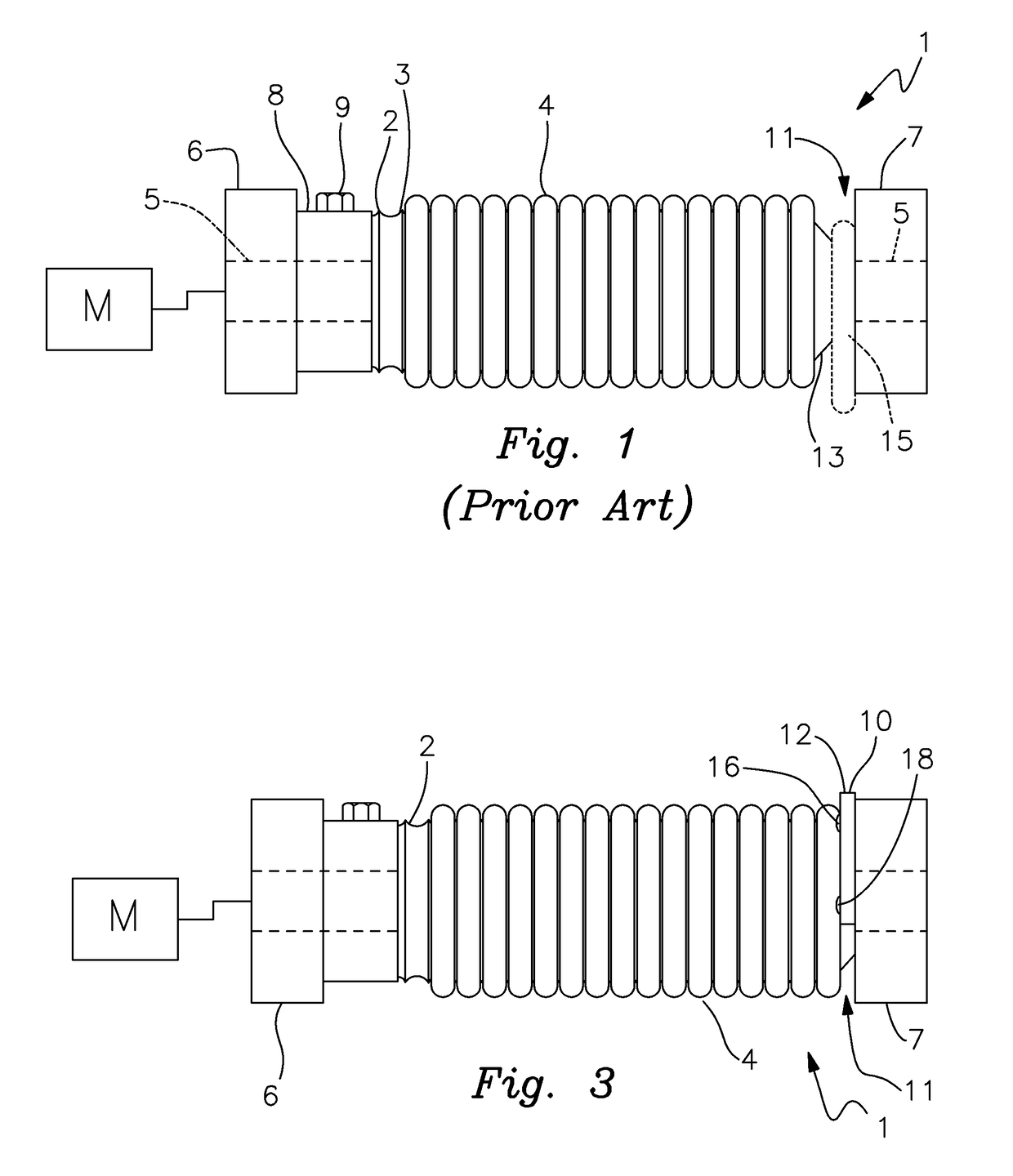Winder Cable Guard
a winder and cable technology, applied in waterborne vessels, hoisting equipment, thin material handling, etc., can solve the problems of cable pinching, wedged or jammed between the winder drum, cable cannot travel smoothly, and the conventional boat lift winder mechanism experiences operating problems, etc., to achieve the effect of reducing significant damage, reducing inconvenience and expense, and improving winder operation
- Summary
- Abstract
- Description
- Claims
- Application Information
AI Technical Summary
Benefits of technology
Problems solved by technology
Method used
Image
Examples
Embodiment Construction
[0020]There is shown in FIGS. 1 and 2 a conventional winder mechanism 1 of the type commonly utilized in boat lifts and other lift applications. It should be understood that winder mechanism 1 is simplified somewhat in the drawings, but the construction and operation of the winder mechanism should be well understood by persons skilled in the art. Although the cable guard of this invention is particularly intended for use in boat lift winders, that should not be construed as a limitation on this invention as the disclosed invention may be used in other lift applications wherein a winch or winder drum, reel, spool or other winding component is driven to selectively wind a cable onto or unwind a cable from the circumferential surface of the winder. Although the term winder “drum” is used herein, it should be understood as referring to any and all generally cylindrical components, e.g. reels, spools, winches, etc. that are axially rotated to selectively wind and unwind elongate lifting ...
PUM
 Login to View More
Login to View More Abstract
Description
Claims
Application Information
 Login to View More
Login to View More - R&D
- Intellectual Property
- Life Sciences
- Materials
- Tech Scout
- Unparalleled Data Quality
- Higher Quality Content
- 60% Fewer Hallucinations
Browse by: Latest US Patents, China's latest patents, Technical Efficacy Thesaurus, Application Domain, Technology Topic, Popular Technical Reports.
© 2025 PatSnap. All rights reserved.Legal|Privacy policy|Modern Slavery Act Transparency Statement|Sitemap|About US| Contact US: help@patsnap.com



